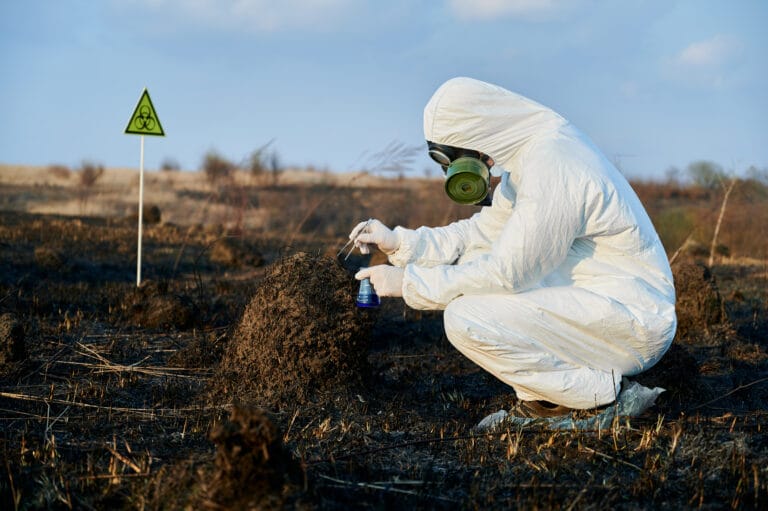
Synthetic Advances in the Development of Natural Pesticides

Innovation in the field of pesticides continues to evolve in response to the growing need for effective and environmentally friendly pest control solutions. One emerging approach gaining attention is the use of natural compounds as inspiration for designing modern synthetic pesticides. This approach not only mimics the effectiveness of natural substances but also enhances their stability and efficacy through synthetic modifications. With this strategy, the agricultural sector is expected to benefit from pesticides that are more efficient, safer, and more sustainable.
- Utilization Natural Concepts in Designing Modern Synthetic Pesticide
- Hybrid Pesticides: The Integration of Natural and Synthetic Compounds
- Challenges in the Large-Scale Development of Modern Synthetic Pesticides
Utilization Natural Concepts in Designing Modern Synthetic Pesticide

The development of synthetic pesticides today is heavily inspired by naturally occurring active compounds found in nature. These compounds serve as a reference in creating formulations that are not only more effective but also safer for the ecosystem. This approach aims to replicate the potency of natural substances while enhancing their stability for practical field applications.
One notable success of this approach is the development of pyrethroids, which are synthetic derivatives of natural pyrethrins found in Chrysanthemum flowers. While pyrethrins are photolabile and easily degraded by sunlight, pyrethroids have been modified to be more stable against light and heat. This modification results in longer-lasting efficacy in the field and reduces the frequency of application.
Advancements in computational technology have also played a significant role in streamlining the design of synthetic pesticides through molecular modeling and structure–activity relationship (SAR) analysis. These techniques enable researchers to simulate the interaction between pesticide molecules and biological targets virtually before synthesis. This makes compound development more focused, time-efficient, and likely to succeed.
One structural approach gaining traction is the incorporation of cyclopropane groups into pesticide molecules. This structure is known for its rigidity and stability, acting as a “conformational lock” that enhances both specificity and chemical resistance. Pesticides containing cyclopropane have demonstrated improved biological activity and lower volatility, making them ideal candidates for long-lasting and sustainable pest control solutions.
Hybrid Pesticides: The Integration of Natural and Synthetic Compounds
The hybrid pesticide approach has emerged as an innovative solution to overcome the limitations of both natural and conventional synthetic pesticides. This concept combines natural components with synthetic materials in a single formulation that complements each other. The goal is to create products that are more stable, effective, and suitable for large-scale production.
A clear example of hybrid pesticides is the formulation that combines neem oil with synthetic stabilizing agents. Neem oil possesses high biological activity but is easily degraded by UV light. With the addition of synthetic compounds, its field stability is significantly improved, resulting in longer-lasting effectiveness.
Despite its promising potential, the use of hybrid pesticides still requires strict monitoring and regulation. This is essential to ensure that the combination of natural and synthetic ingredients does not cause adverse environmental effects. With proper management, this approach has the potential to become a key tool in environmentally friendly agricultural systems.
Challenges in the Large-Scale Development of Modern Synthetic Pesticides
The large-scale production of synthetic natural pesticides continues to face complex challenges. One of the main obstacles is maintaining a balance between production costs and affordability for farmers. Additionally, regulatory barriers—particularly during testing and approval phases—often slow the implementation of innovative pesticide products in the field.
Another challenge lies in ensuring that synthetic compounds retain the ecological benefits typically associated with natural pesticides. Synthetic products must be carefully designed to avoid negative impacts on non-target organisms. This presents both a scientific and ethical issue in the development of modern pesticides.
To address these challenges, interdisciplinary collaboration between chemists, biologists, and agricultural engineers is crucial. Policy support and increased investment in research and development will help accelerate the adoption of synthetic natural pesticides in the field. These efforts have the potential to revolutionize sustainable pest management without compromising agricultural productivity.
Read more:
3 Recommended Pesticide Lab Tests to Pass the Ministry of Agriculture’s Distribution Permit!
Before your pesticide product reaches the distribution stage, ensure its formulation is proven safe, effective, and meets the requirements for a distribution permit. Standardized laboratory testing helps ensure its stability, biological potency, and environmental impact are in line with regulatory requirements. Entrust this quality verification process to an accredited pesticide testing laboratory, so that every product you release is ready for market with complete confidence and meets the expectations of the modern agricultural industry.
Author: Dherika
Editor: Sabilla Reza
References:
B. Hofmann., K. Ingold., C. Stamm., et al. (2023). Barriers to Evidence Use for Sustainability: Insights from Pesticide Policy and Practice. Ambio, 52(2), 425–439. https://doi.org/10.1007/s13280-022-01790-4.
Harun-Ur-Rashid, M., Imran, A.B. (2025). Biomimetic and Synthetic Advances in natural Pesticides: Balancing Efficiency and Environmental Safety. Journal of Chemistry, 2025, 1-23. https://doi.org/10.1155/joch/1510186.
J.E.Casida., & K.A.Durkin. (2017). Pesticide Chemical Research in Toxicology: Lessons from Nature. Chemical Research in Toxicology, 30(1), 94–104. https://doi.org/10.1021/acs.chemrestox.6b00303.
X. Huang., X. Tang., A. Liao., W. Sun., L. Lei., & J. Wu. (2025). Application of Cyclopropane with Triangular Stable Structure in Pesticides. Journal ofMolecularStructure 1326. https://doi.org/10.1016/j.molstruc.2024.141171.



